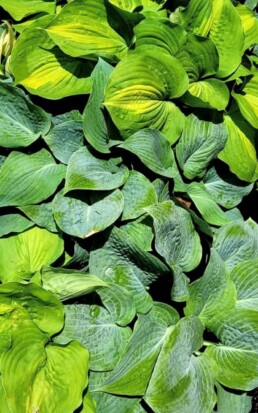Indiana Garden – Dividing Perennials
Written by Rosie Lerner via Purdue Consumer Horticulture
Original Article can be found here.
Late summer or early autumn is the best time to divide perennials that bloom in spring and summer.
But not all perennials need to be divided. Generally, perennials should be divided to rejuvenate an old, overgrown planting or to increase the number of plants in the garden. Plants such as peonies, iris, hosta and daylilies are among the most common garden perennials that are easily divided.
Making divisions is a simple task, but should be done with care to avoid injury. Dig the plants, preferably with a spading fork, and lift as much of the root system as possible. Then, use a large, sharp knife, pruners or spade to cut the larger chunks into smaller pieces. Each new piece should be made large enough to ensure successful foliage and flower production next year.
Then replant the new pieces in the desired location and be sure to plant at the proper depth. With peonies, this is where most gardeners go wrong. Planting too deep may prevent flowering. Set peony roots so that the buds or “eyes” are only an inch or two below the surface of the soil. Each piece should have at least three solid buds.
Division of daylilies is recommended every 7-10 years or so to keep plantings renewed. Older plantings become more difficult to divide and reestablish due to their extensive rhizomes (underground stems). Daylilies are usually divided into single fans or clumps for propagation purposes.
Iris may quit blooming as plantings become overly crowded. The rhizomes are easily lifted and cut into smaller sections to create new plantings. Hostas seldom require division but can be easily propagated by dividing young plants. Older plants become tough and do not reestablish as readily.
While these perennials are quite hardy in Indiana, a winter mulch applied in late November or December is advisable to prevent the new plants from heaving out of the soil due to alternate freezing and thawing during winter. Be sure to remove the mulch to the side of the plants as soon as new growth begins in spring.
